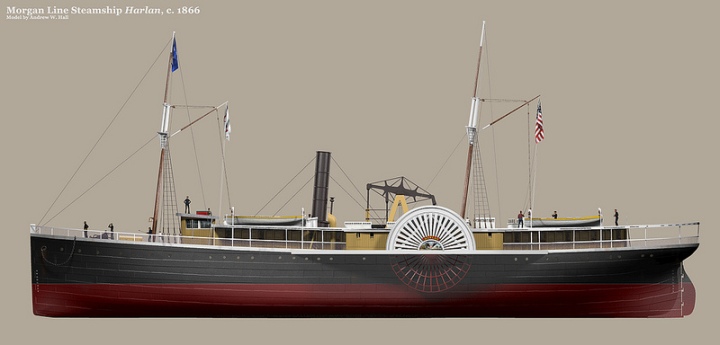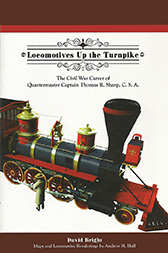Aye Candy: Morgan Line Steamship Harlan, 1866


New renders of the Morgan Line steamship Harlan (seen previously here), that ran a coastwise route between New Orleans, Galveston and Indianola, Texas in the late 1860s and 1870s. New renders of the Morgan Line steamship Harlan, that ran a coastwise route between New Orleans, Galveston and Indianola, Texas in the late 1860s and 1870s. When she began the route in mid-1866, Harlan ran with three other steamships (Harris, Hewes and Morgan) on a 12-day cycle: New Orleans to Galveston (2 nights); after a brief stop at Galveston, on to Indianola (1 night); overnight at Indianola (1 night) then back to Galveston (1 night); a brief stop again at Galveston and back to New Orleans (2 nights). Fives nights at New Orleans, and then cycle repeats. A published schedule for the line (Galveston Daily News, June 13, 1866) gives the following for one of Harlan‘s voyages:
![]()
Harlan would depart New Orleans again on June 17. By running four ships on a schedule like this, there was a steamer departing each port every three or four days. Recall that at this time, there was no rail connection between Texas and the rest of the United States — that came later. The trip between Galveston and New Orleans is a long car ride now, but 150 years ago, a two-night trip aboard a coastal steamer like Harlan was both the fastest and most comfortable way to make the journey.
Harlan was the last of seven ships built to the same design by Harlan & Hollingsworth for the Morgan Line between 1861 and 1866. The first of these ships, St. Mary’s, was purchased new and converted into the Union warship U.S.S. Hatteras. In 1880, Harlan transported former President Grant and his party from Clinton, on Buffalo Bayou near Houston, to New Orleans.
Full-size images available on Flickr.







__________






Once again another detailed and informative 3-D rendering, Andy. I really enjoy the way these images give us a sense of the ship when it was new and freshly launched.
Also, in some earlier posts, I know you mentioned the kind of software you use to make the renderings. But I was wondering exactly how do you go from source material (and what kind: original drawings? photos? wreck survey data? etc?) to the final rendering? I think I’m not the only reader that would be interested in your process, so perhaps a blog post on “how I did it” perhaps?
Cheers,
Reed